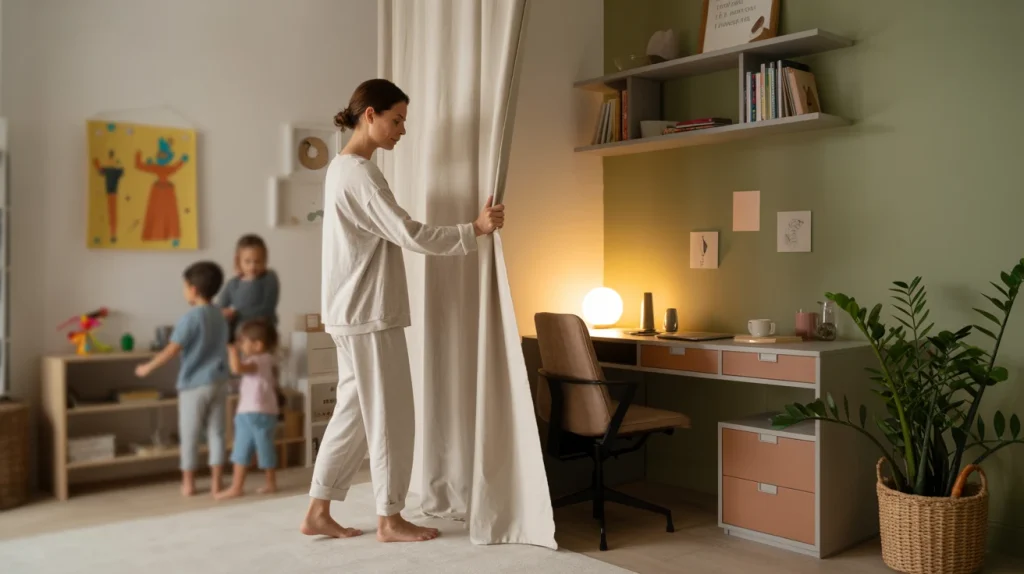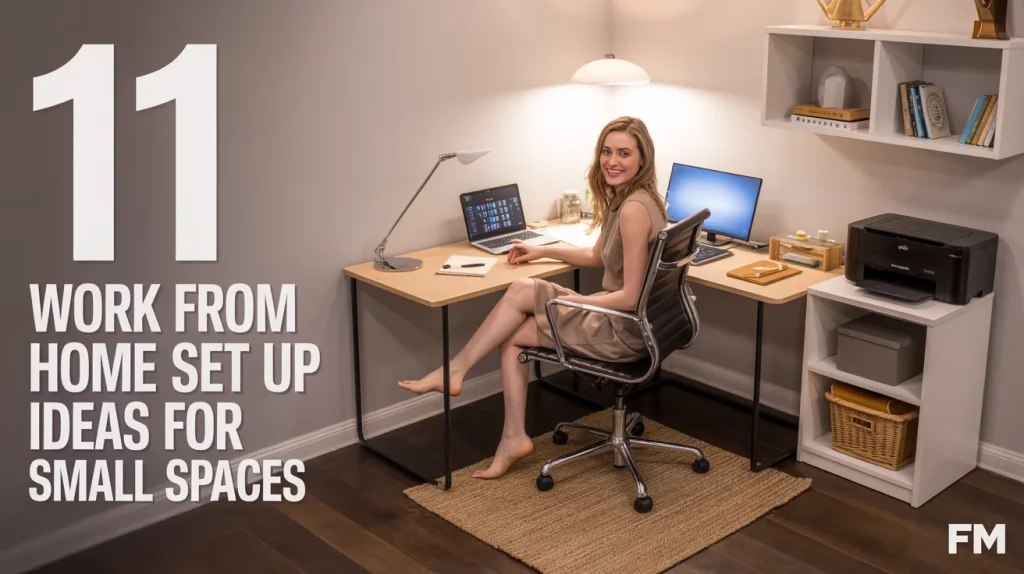Current data indicates that the average hourly pay for painters is around $21.82 as of May 2024, with rates ranging from $17 to $43 depending on experience and location. Specialty jobs can go up to $121 an hour.
Interior painting costs $12 – $18 more per hour than exterior. This is because interior work needs more skill. To learn more about self-employed painter rates, keep reading this guide. If you have questions, ask in the comments at the end.
As a self-employed painter, knowing the current market rates is key. The painting industry has seen higher labor costs lately. This guide will help you price your services right, making sure you earn well while giving great value to your clients.
Whether you are working on interior or exterior tasks, think about materials, equipment, and job specifics. By the end of this article, you’ll know how to set your ideal hourly rate. This will depend on your experience, location, and the paint projects you do.
Key Takeaways
- Self-employed painters charge between $17 and $43 per hour on average
- Specialty painting work can cost up to $121 per hour
- Interior painting rates are typically higher than exterior painting rates
- Painting costs average $2.89 per square foot for interior or exterior work
- Professional painters cover 1,200 to 2,800 square feet in an 8-hour workday
- Factors like location, project type, and experience influence hourly rates
Self-Employed Painter Hourly Rate: What to Expect
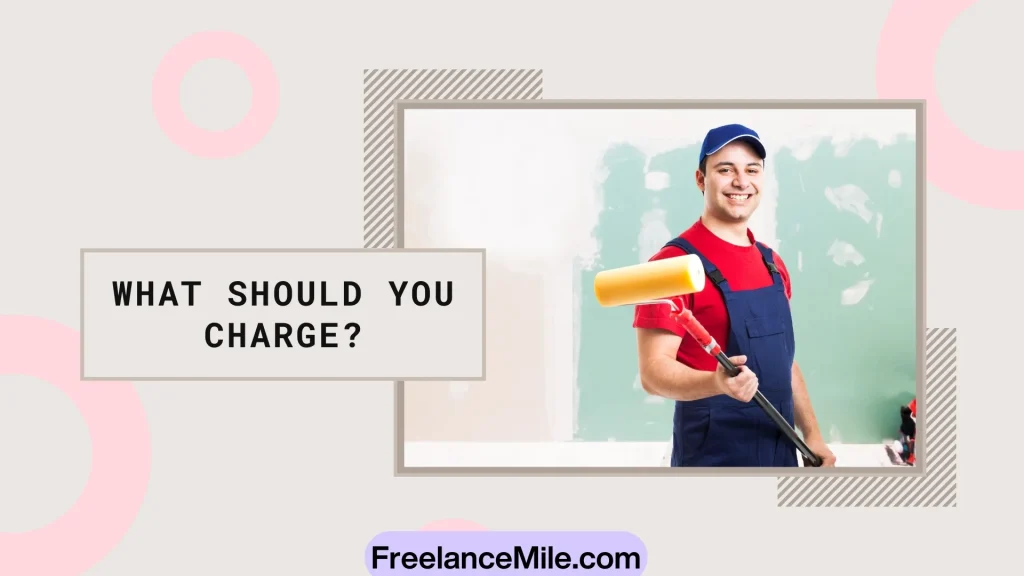
As a self-employed painter, your hourly rate can change a lot. Current data indicates that the average hourly pay for painters is around $21.82 as of May 2024, with rates ranging from $17 to $43.89 depending on experience and location.
With more experience, you can earn 32% more later in your career.
When setting your hourly rate, think about these important points:
- Early-career painters with 1-4 years of experience earn around $17.50 per hour
- Experienced painters with 10-19 years in the field, often exceeding $24 per hour depending on their specialization and location.
- The hourly rate range for self-employed painters typically falls between $17 and $43
Your yearly earnings can be around $45,401. This depends on where you work, your specialty, and the painting jobs you choose.
| Painting Type | Average Daily Cost |
| Interior Painting | $362 – $686 |
| Exterior Painting | $298 – $524 |
| Specialized Finishes | $537 – $963 |
| Hazardous Jobs | $684 – $1,132 |
Data as of 2024
Your paint costs will affect your pricing. Professional painters get 20% to 40% off paint prices. This can help you make more money. The average cost to hire a painter in the U.S. is between $200 and $500 per day. But, this can change based on your location and skills.
Understanding the Painting Industry Landscape
The painting industry is always changing. It’s influenced by market trends and the economy. As a self-employed painter, knowing these changes can help you make good choices for your business.
Current Trends in the Painting Market
The painting market is competitive today. Prices vary based on where you are and the type of project. Professional painters usually charge $20 to $50 an hour for interior work.
The cost to paint a bedroom is between $800 and $1,200. Bigger rooms can cost more than $3,000.
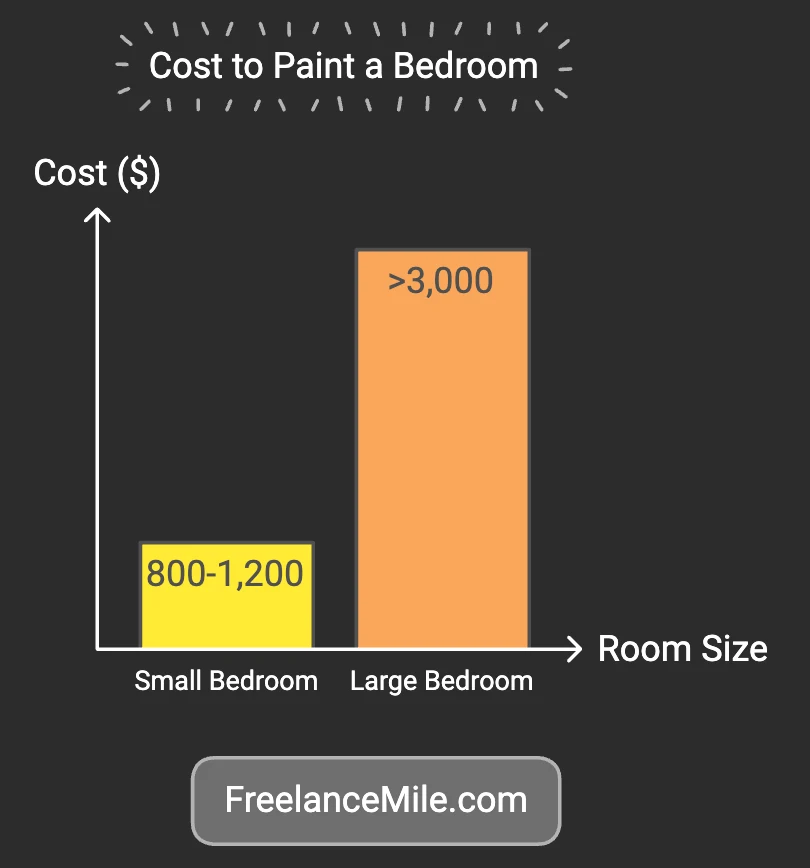
Factors Influencing Painter Demand
Several things affect how much painting work there is:
- Housing market trends
- Renovation activity
- Economic conditions
- Seasonal changes
Knowing these can help you adjust your prices and services. This way, you can keep a good profit margin.
Seasonal Variations in Painting Work
Painting work changes with the seasons. Prices can drop by 30% to 60% in winter. Exterior painting depends on the weather, but interior jobs are more steady all year.
| Season | Demand | Average Cost (Interior) | Average Cost (Exterior) |
| Spring | High | $2.50 – $6.00 per sqft | $2.50 – $6.00 per sqft |
| Summer | High | $2.50 – $6.00 per sqft | $2.50 – $6.00 per sqft |
| Fall | Moderate | $2.00 – $5.00 per sqft | $2.00 – $5.00 per sqft |
| Winter | Low | $2.00 – $5.00 per sqft | $2.00 – $5.00 per sqft |
Data as of 2024
When planning your painting company’s strategy, think about these trends. Adjust your services and prices to meet demand. This can help you succeed and increase your profit margin.
Factors Affecting Painter Hourly Rates
Knowing what affects painter hourly rates helps you understand painting project costs. We’ll look at the main factors that change house painter prices. These factors also impact your project’s total cost.
Experience and Skill Level
A painter’s skill level greatly influences their rates. Experienced painters with special skills charge between $25 to $70 per hour. Their rates show they can do complex jobs well and give top-notch results.
Geographic Location
Your location changes painting costs a lot. Cities with high living costs have painters charging more than rural areas. For example, exterior painters in some cities might earn up to $50 per hour. The national average is around $18 per hour.
Type of Painting Project
The type of painting project you have also matters:
- Interior painting: $2 to $6/square foot
- Exterior painting: $1.50 to $4 per square foot
- Commercial painting: Usually more expensive because of size and complexity
Materials and Equipment Costs
The quality of materials and equipment needed for your project can raise costs. For example, working with lead paint needs extra safety steps and skills. This can make your project more expensive.
| Project Type | Typical Cost Range |
| Bedroom Painting | $300 – $1,200 |
| Furniture Painting | $100 – $1,000 per item |
| House Painting | $1,500 – $12,000 per job |
By understanding these factors, you can guess the costs of your painting project better. This helps you make smart choices when picking a house painter.
Comparing Interior vs. Exterior Painting Rates
Understanding the difference in painting rates for inside and outside your home is key to budgeting. Interior painters charge more because they need to be very precise. They usually make between $20 and $50 an hour. The most skilled painters get the highest pay.
Exterior painting costs a bit less per hour but can add up because of the bigger areas. Here’s a closer look at the costs:
| Painting Type | Cost per Square Foot | Average Project Cost |
| Interior Painting | $2 – $6 | $800 – $1,200 (bedroom) |
| Exterior Painting | $3 – $6 | $4,000 – $12,000 (2,500 sq.ft. house) |
Wages in the painting world can change based on how complex the project is. For example, painting murals can cost up to $70 an hour. The final price depends on how well the surface is prepared, the paint quality, and where you live. Remember, even though outside painting might seem pricier, it often needs less touch-ups than busy inside areas.
Choosing the right painter can really affect your costs. An apprentice might charge $17 to $43 an hour, while a master painter could ask for $60 to $100+. When planning your project, think about the painter’s experience and your budget. This will help you find the best deal for your needs.
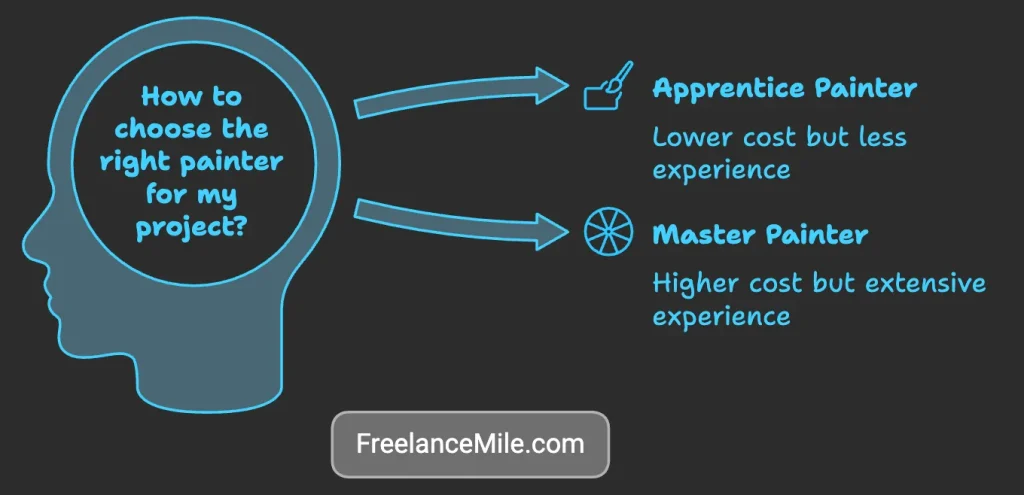
Calculating Your Ideal Hourly Rate as a Self-Employed Painter
As a self employed painter, setting the right hourly rate is key to your success. Your painting cost should cover expenses, ensure profit, and stay competitive. Let’s look at how to figure out your ideal rate.
Assessing Your Overhead Costs
First, list all your business expenses. This includes materials, insurance, rent, and equipment. Also, remember to include costs for emergency funds and retirement savings. Knowing these helps you see the minimum you must charge for each job.
Factoring in Profit Margins
To find your hourly rate, think about your desired annual income and hours worked. Not all your time is spent painting. Consider holidays, slow periods, and tasks not billed. Seek for a profit margin of 10% to 40% of the project cost.
Considering Market Competition
Look at what other painters charge in your area. This helps you set a competitive price while staying profitable. An average painter might charge $17 to $43 per hour. Your rate could be different based on your skills and experience.
Some painters prefer a flat rate for project size over hourly rates. This rewards efficiency and is clear for clients. Choose a method that covers your costs and meets market expectations.
Strategies for Maximizing Earnings as a Self-Employed Painter
To make more money as a freelance painter, you need to be smart. Start by setting rates that match your skills and what people are willing to pay. Most painters charge around $21.82 an hour, which can mean making $45,401, a year. To hit this goal, work efficiently and do great work.
Being good at special things can make you stand out and earn more. Think about learning to do faux finishes or paint murals. These skills can really up your earnings.
Getting your painting estimates right is key to making money. Here’s a simple way to figure out what to charge:
- Estimate how many hours you’ll work
- Multiply that by your hourly rate
- Add in the cost of materials, doubled
Buying good paint and tools helps you work better and faster. Also, getting to know suppliers can help you save money over time.
Also, being good at marketing yourself and building a strong reputation can lead to better projects and more customers. This can help you make even more money.
Legal and Financial Considerations for Self-Employed Painters
If you work as a painter on your own, you must know some important rules. These rules help you keep your business running well and avoid trouble.
Insurance Requirements
It’s key to protect your painting business. You need general liability insurance, which costs $500 to $1,500 a year. If you have helpers, you might also need workers’ compensation insurance.
Tax Implications
As a self-employed painter, you have special tax needs. You’ll have to pay self-employment taxes and make quarterly payments. Keep good records of your income, expenses, and prep work for tax time.
Business Licensing and Certifications
Getting the right licenses and certifications is vital. The cost for business licenses can be from $50 to $500. Special certifications, like EPA lead-safe, can lead to better-paying jobs.
Your pay as a self-employed painter can change a lot. It depends on where you work, how much experience you have, and the type of projects you do. Knowing these legal and financial rules can help you manage your business better and maybe even earn more.
Conclusion and Future Predictions
Your hourly wage as a self-employed painter decorator can change a lot. It depends on your experience, where you work, and the type of project. The average hourly rate is around $21.82, but some can earn over $100k a year. This shows there’s room to grow, especially as you get better and more known.
The painting industry is set to change soon. You’ll need to learn new tech and eco-friendly ways to keep up. Specializing in certain areas can also help you earn more. For instance, doing small jobs or unique finishes can make you stand out.
The outlook for self-employed painters is good. In British Columbia, there are significant job opportunities across various sectors, with many openings anticipated in the coming years. By being flexible and doing great work, you can have a successful career. You can choose to work by the hour or take on bigger projects.




